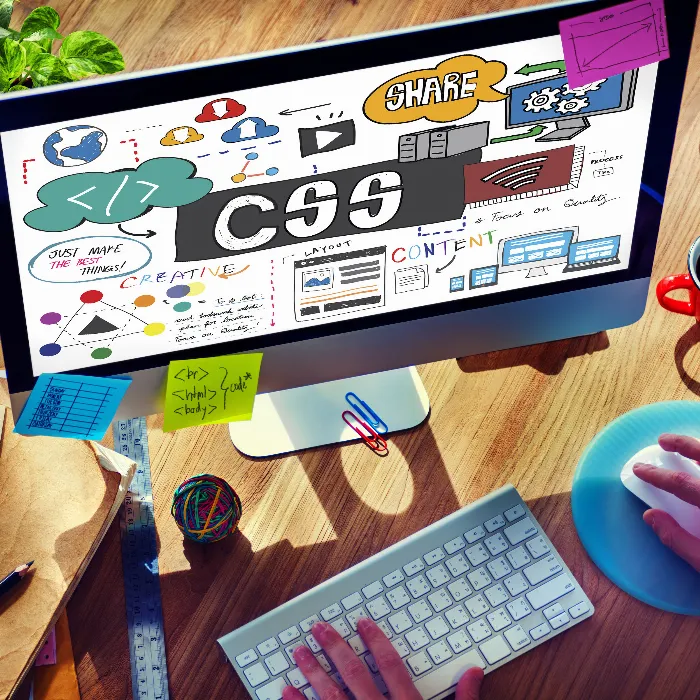Text Formatting and the use of headings are central elements when creating web pages. To design an appealing web page layout, it is crucial to structure authentic content. In this guide, you will learn how to use basic HTML functions for text formatting and heading implementation. Let's jump straight into practice!
Key Insights
- The structure of text on a web page is accomplished through various types of headings.
- Placeholder texts like "Lorem Ipsum" are useful for testing layouts.
- Correct paragraphs and headings improve readability and user experience.
Step-by-Step Guide
1. Inserting Headings
Start by placing a heading on your HTML page. Use the H1 tag for the main heading that summarizes the topic of your page. A concise heading helps visitors grasp the content of the page at a glance.
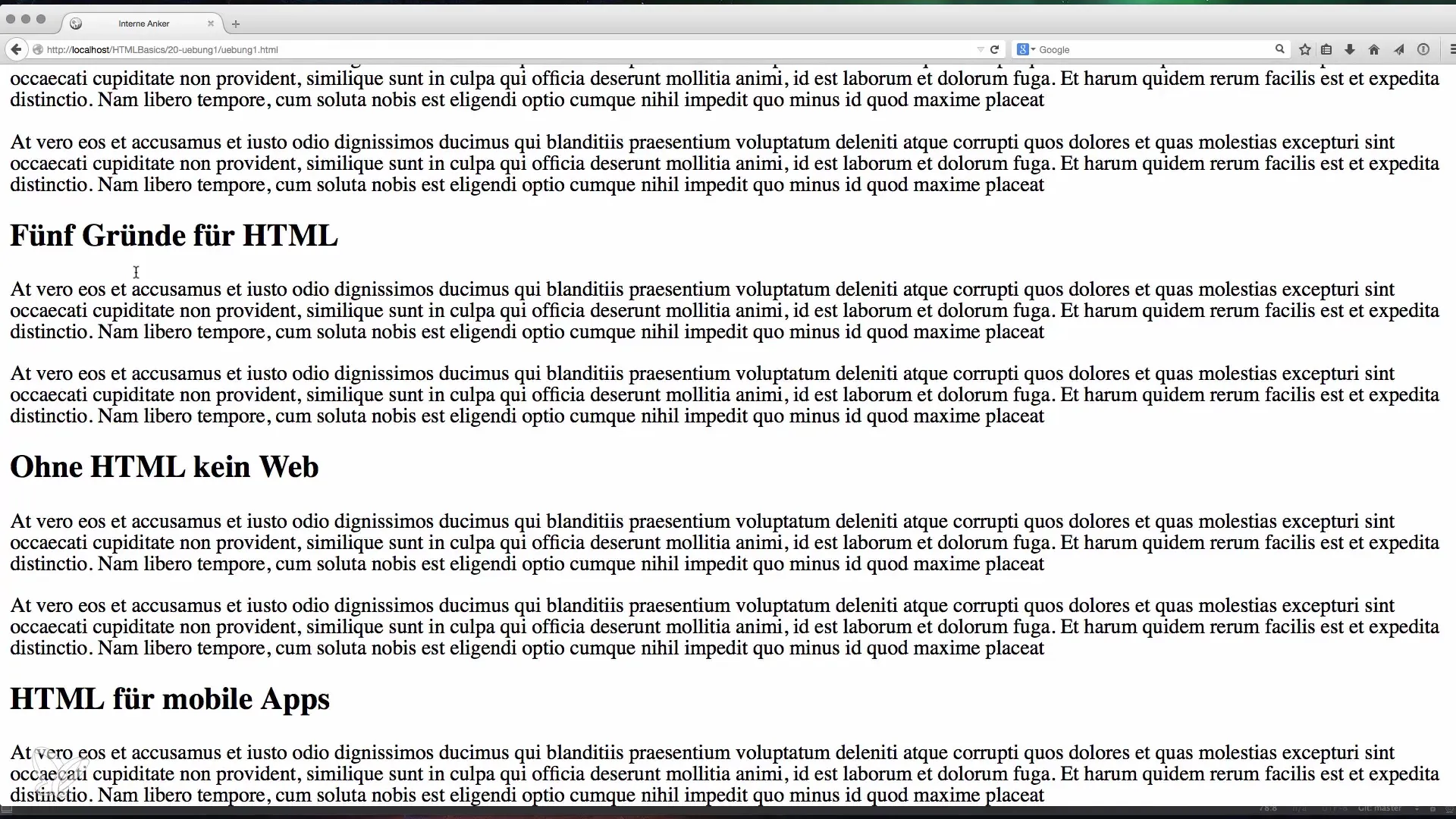
2. Using Paragraphs
After the heading, it is important to break the text into meaningful paragraphs. Use the P tag to create paragraphs and ensure that each paragraph has a clear statement. For example, you can start a new paragraph for each new thought or idea.
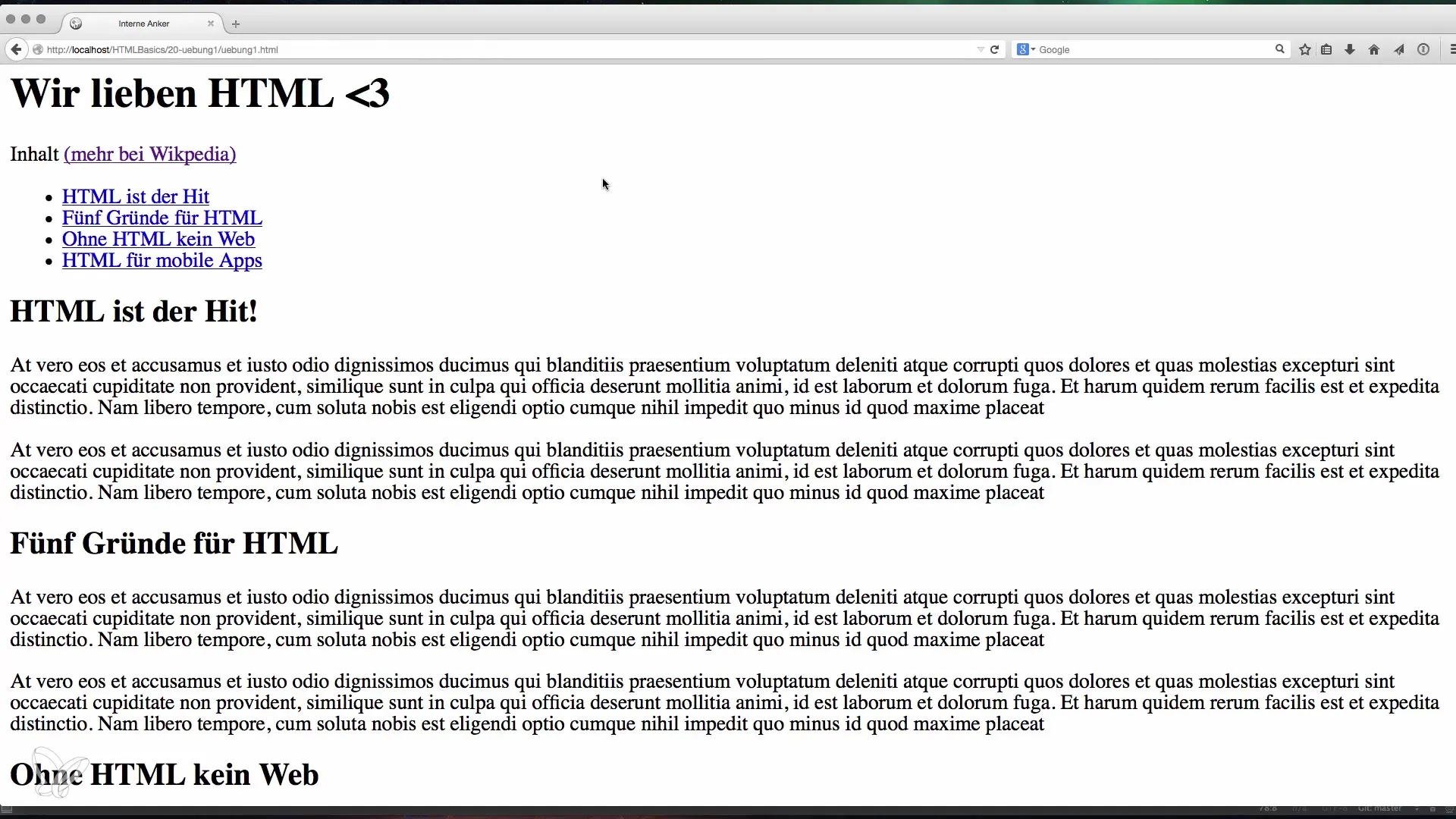
3. Generating Placeholder Text
If you don't have enough of your own text, you can use placeholder texts like "Lorem Ipsum." Visit loremipsum.de to generate texts easily. Copy the placeholder text and paste it into your HTML structure to simulate a realistic layout.
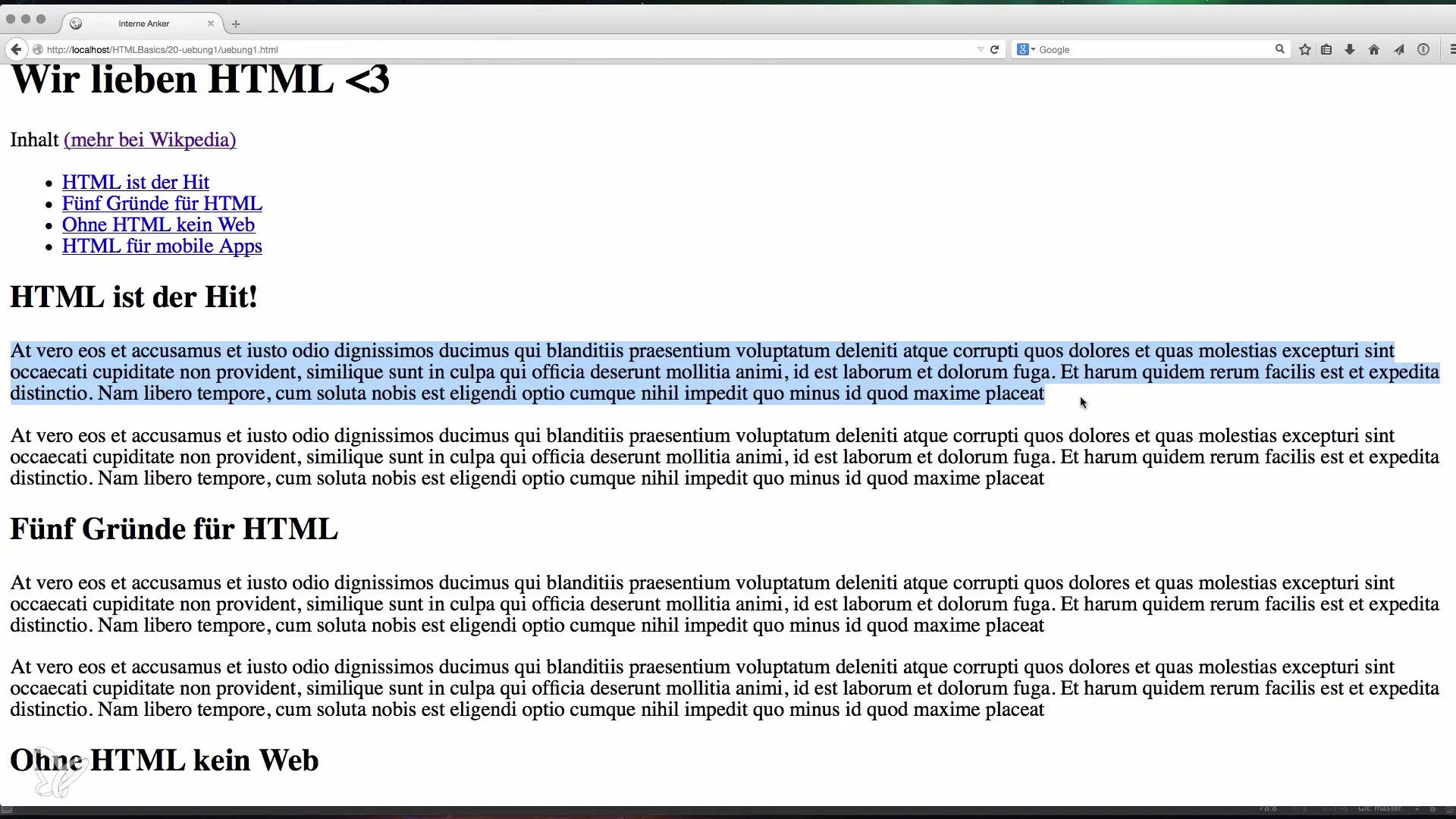
4. Using Headings Hierarchy
Use a clear hierarchy of headings to clarify the structure of your content. After the H1 tag, you can use H2 for subheadings and for headings in shorter sections. This structure is crucial for making it easier for readers to scan the text.
5. Combining Paragraphs with Headings
Make sure to create multiple paragraphs for each heading. This gives your texts depth and allows readers to obtain detailed information without feeling overwhelmed. A good rule of thumb would be to have at least two paragraphs per heading to elaborate the content well.
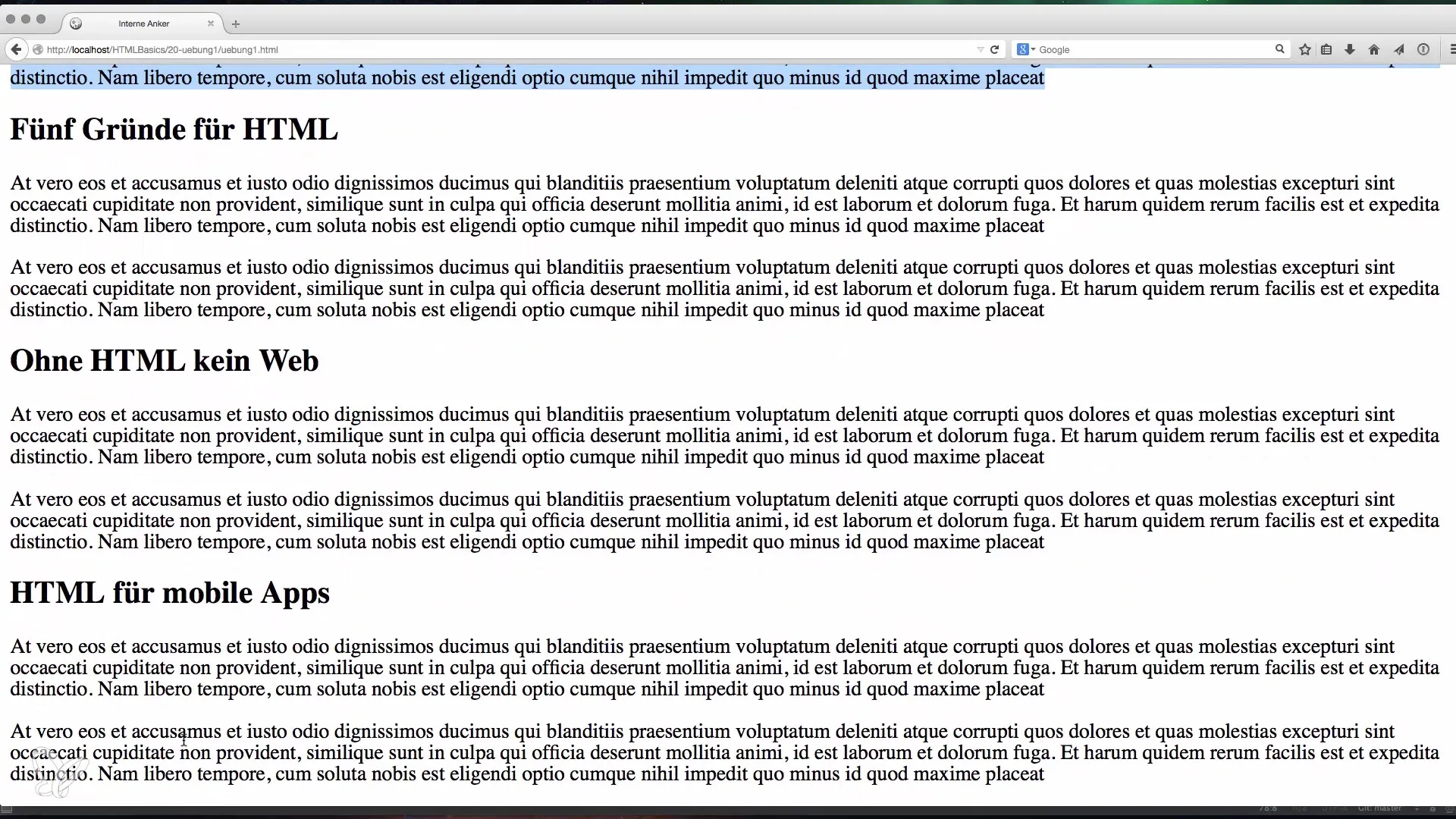
6. Creating a Table of Contents
If you have a large amount of text, it may be useful to create a table of contents. A clickable table of contents enhances usability, allowing readers to quickly navigate to the section that interests them. Make sure all links are correctly set and lead to the relevant sections.
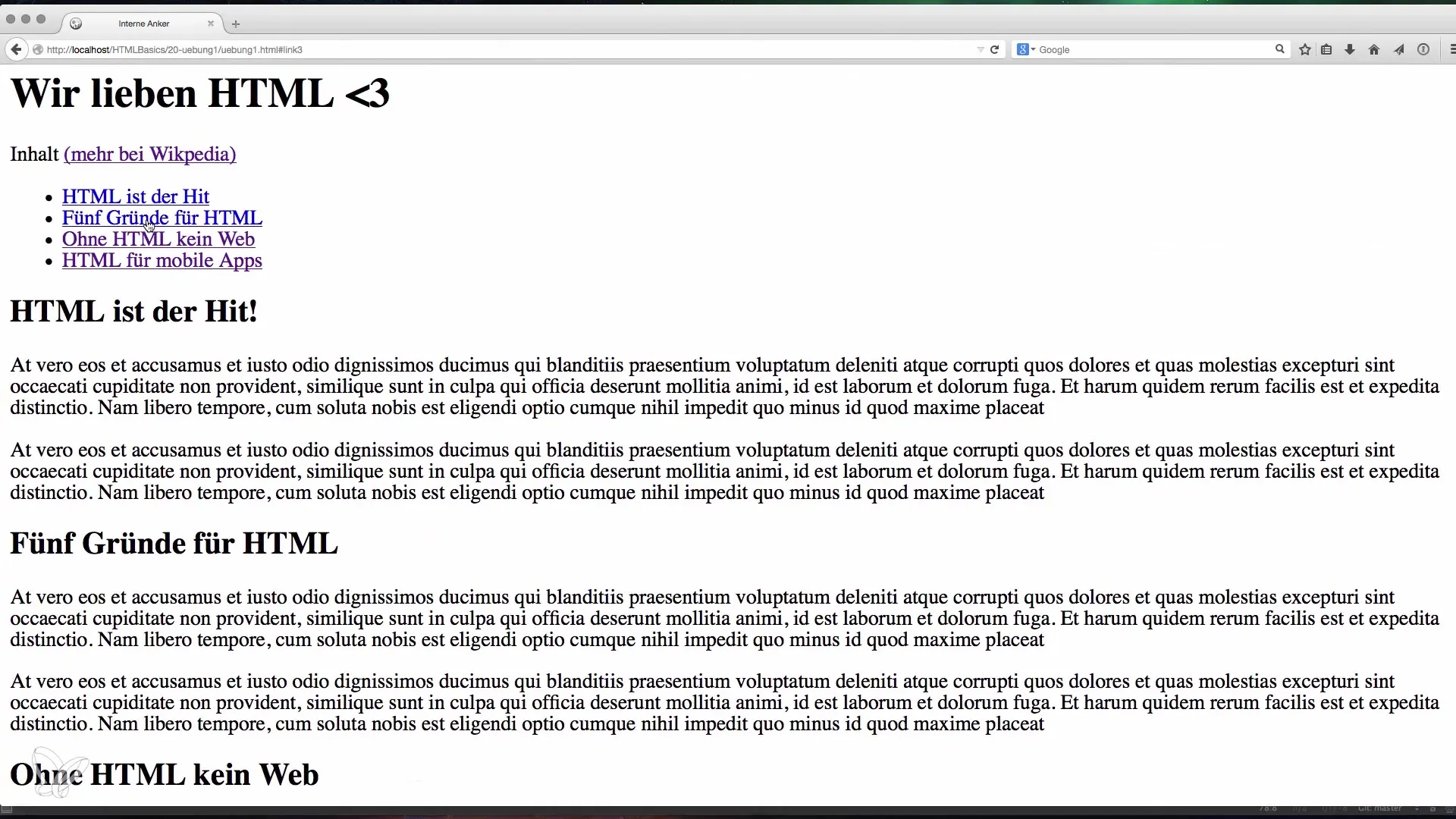
7. Final Review and Adjustments
After structuring your texts, paragraphs, and headings, it is important to review the entire page. Ensure that all elements work well together and that readability is ensured. You may need to make adjustments to achieve the user experience you are aiming for.
Summary - Basics of Text Formatting in HTML
In this guide, you have learned how to improve the structure of your HTML pages through the effective use of headings and paragraphs. Add placeholder texts to realistically test your layouts, and create a table of contents for better user navigation.
Frequently Asked Questions
How do I insert headings in HTML?You use the tag for main headings, for subheadings, etc.
What is placeholder text?Placeholder texts are sample content used to illustrate layouts, such as “Lorem Ipsum”.
Can I have multiple paragraphs under a heading?Yes, it is advisable to use at least two paragraphs per heading to deepen the content.
Why is a table of contents important?A table of contents allows readers to quickly navigate to the sections relevant to them.
